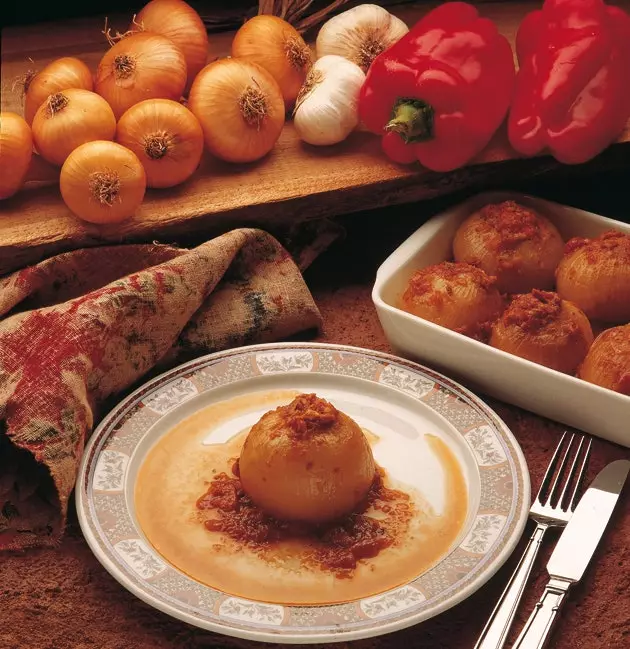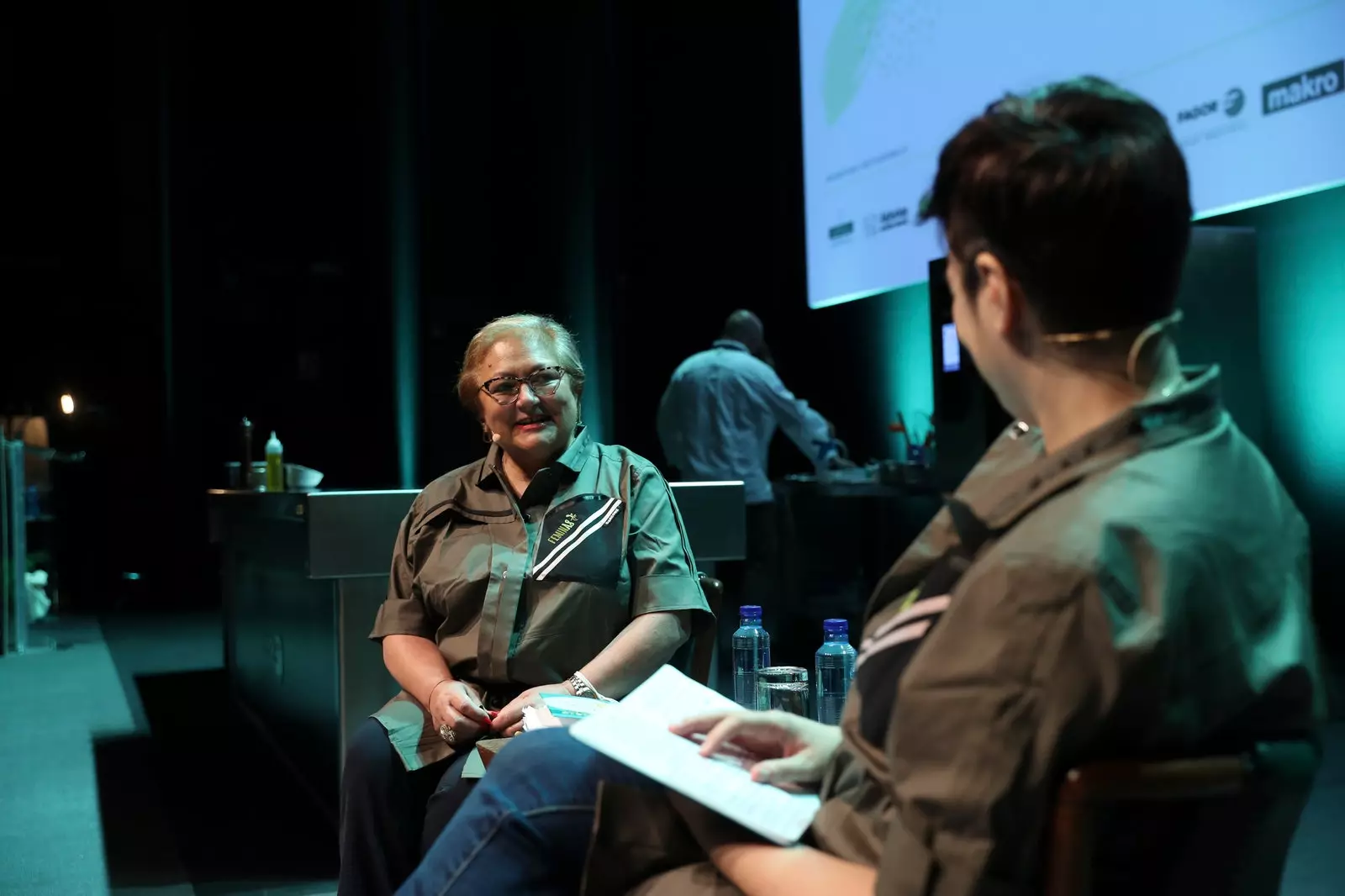Viri Fernández, María Busta, Amada Álvarez, Yvonne Corral or Sara López : we put names and surnames to several asturian women , representing all those who proudly use the word “guisandera” to refer to his trade with roots, which speaks of memories, territory, landscape, heritage and identity.
Although they do not know it, they are prophetesses in their land: they have been or are in front of historic eating houses , are defenders of culinary tradition of the Asturian villages and heiresses of that gastronomic culture of use that was born out of necessity and that has been passed down slowly, from generation to generation. females, the I International Congress of Gastronomy, Women and Rural Environment , has been in charge of making visible and valuing its role.
We chat with Viri Fernández, María Busta, Amada Álvarez, Yvonne Corral and Sara López to remember who we are, where we come from and where we are going.

These women teach us Asturias by conquering our stomachs.
VIRI FERNÁNDEZ, FROM EL LLAR DE VIRI (CANDAMO)
“I am the daughter of a family from the countryside, from the town, enterprising and hard-working, who struggled to overcome many things. And the spoon dishes they were the ones who got us going ”. Viri created 25 years ago The Llar of Viri in the house where she was born. “I opened what today seems to me to be audacity: an eating house in Asturias where there was no television or bar counter, with cotton tablecloths and napkins and hot coffee”.
“I've always been good at cooking, talking, and selling,” she tells us as she does all three at once. It's a manual cooker. “ The guisanderas were autonomous women, liberated, single, widowed or who had children in their care , to whom necessity made them move in a world of men. Their knowledge was inherited by someone close and they were the germ of the hospitality industry in Asturias”.
In her house you have to try the Fabada, the Asturian pot or the chestnut pot , recovered from the Middle Ages, and garden dishes, tuna, game stews or trunk mushrooms . The youngest dish on the menu is 11 years old, but there are many that have been around for more than two decades, from the beginning.
“That philosophy that first led me to international slow food and that has now given us the green star of the Michelin Guide It is a great recognition. Until recently it was very fashionable to have studied at Le Cordon Bleu or at the Paul Bocuse Institute, but the modern kitchen owes us the foundations . We are experiencing a return to the old: now everyone brags about having learned to cook from their mother or grandmother”.
MARÍA BUSTA, FROM CASA EUTIMIO (LASTRES)
“The family trajectory began as things began before: looking for life. My parents, with the money from the wedding gifts, rented a place to open their own restaurant practically from scratch. The first 15 years it was the Miramar and then it came Euthymius House, 45 years ago”.
María Busta and one of her brothers took over in 2008 . From the beginning they worked with seafood: the sea bream behind Casa Eutimio creates a hobby . "My parents started cooking it that way because it's how they did it on ships, with lemon, vinegar and garlic . It is a recipe from the high seas”. Cream of crabs or seafood soup are another of his classics.
And they also cook other traditional Asturian dishes such as the fabada, the beans with clams, the rice pudding, the cheese flan or the stuffed onions , very typical of the mining basins, which here are made with bonito. “There used to be 11 canneries operating at the same time, but now there are only 3 left. We have to continue defending this part of the sea that identifies us”.
They started making preserves for the restaurant in 2003 (anchovies, bonito, sea urchin caviar or pâté) and now have opened a store in Gijón: Eutimio Gastro . "It was a project of my father because of the tradition of Lastres, linked to his fleet, since he fished and shellfished." This new project has also inherited that stew tradition: “in the confinement we made takeaway food and distributed it”. And fresh pasta, because her sister Ana worked in pastures in Italy.
“I consider myself a guisandera because of the way I work and because At Casa Eutimio we pamper the elaborations, the times, the traditional recipe and the cultural links . Asturias has a lot of variety in the language but also in the preparation of basic dishes such as pot of cabbage, which is made differently in each area: with chestnut, without faba, with potato or cabbage or with xuan , which is a sausage similar to blood sausage but larger, due to the area of the intestine that is used”.
AMADA ALVAREZ, PRESIDENT OF THE CLUB OF THE PEA GUIDES OF ASTURIAS
“The Peas Club born in november 1997 . The first Asturias Hospitality Congress was just going to be held and, at a previous dinner, a conversation arose about ancestral dishes. Since then, several professional friends began to meet one day a month in Oviedo. We started with 13 women and now we are around 40 . Don Gabino de Lorenzo, mayor of Oviedo, and the media were very supportive. Our godfather was Pepe Díaz”.
Amada, who comes from San Cristóbal de Malleza , from the Asturian council of Salas, she speaks with emotion of that time, "although they were difficult years: we were very fighters because we had to combine full-time work outside the home with housework and children."
She has already retired as a cook (she had her own restaurant, Meraxko) , but she is still at the foot of the canyon in that other task of recovering the gastronomic cultural identity of Asturias: "The one who is a stew, she is for life".
It runs in her family. Her grandfather was a stew here, but also across the pond . "Without being a professional cook, she opened a restaurant in Cuba, where she went before the Civil War." And her, she was already 8 years old, she sometimes cooked the pot for her family , when her mother had to go on a trip. “I consider myself a guisandera because we give a degree. The guisandera takes home a diploma protected by her godmother or godfather and by the rest of the guisanderas”.
Loved remember the dumplings (of bread dough) or the casadiellas (with puff pastry), but also lancha's kitchen . “You entertained the crew that helped you do work in the fields with a good meal. Then it became party food, which we took when we went to a pilgrimage, since in Asturias there was a lot of custom”.
The one from those years it was a kitchen for the houses in exchange for other jobs, not for money . At weddings or events, the guisanderas cooked, which were attended by one or two parishes, because in inland Asturias there was no restoration and communications were very poor, by roads. The eating houses that were in the capitals , but in the villages and in the towns at most, there were winches. From town to town there was a lot of cultural and physical distance.”
The guisandera also tells us about sausages such as Chosco de Tineo , which used to be called xuan, from the simple boiled eggs or breaded steaks , which were made to take to the beach or to any celebration. “That type of cuisine is what I most wanted to recover because that goes with the memory of the people. If the towns end, this type of cuisine ends... and its stories”.

Amada Álvarez is the president of El Club de las Guisanderas de Asturias.
YVONNE CORRAL AND SARA LÓPEZ, FROM CASA TELVA (VALDESOTO, SIERO)
Yvonne was one of the pioneering peas . “I have the number 18 of the Club de Guisanderas de Asturias”. She also comes from her family: her great-grandfather, who at the same time inherited it from her mother, worked in Montevideo as a cook. Her parents founded the La Fragata cafeteria in Gijón and they also lived in Belgium: her mother was in the kitchen of the house of the consul of Guatemala and Panama, and her father was the butler. Yvonne has spent her whole life in the kitchen . "This is a chain," she tells us.
The next link is her daughter Sara, who she was 8 years old when they opened in 1991 Telva House in the family home, which was a sweet shop. Now here they cook the usual homemade food, that of the towns: fabada, pote, tripe or pitu de caleya . “It fills me up when they tell me that it reminds them of their grandmother's food,” admits Yvonne.
Sara brings a different vision: the exchange between cultures . She trained at the School of Hospitality in Gijón and at the José Cela University (Madrid), where she studied intercultural protocol. That's why she now leaves her mark on dishes like tortillas (Mexican style) with tripe and air of Cangas wine or in the salpicón , which has some citrus such as lemons, lime and bergamot. Her creativity is also reflected in the creations of hers own catering hers, Cherry Blossom.
The list is long. We could go on chatting for hours (and pages) with guisanderas, which fill every rural corner of Asturias with spoon dishes and tenacity . But we prefer that you go to her house so that the rest of the story, which they have already written and will continue to write, they keep telling you.
SUBSCRIBE HERE to our newsletter and receive all the news from Condé Nast Traveler #YoSoyTraveler
